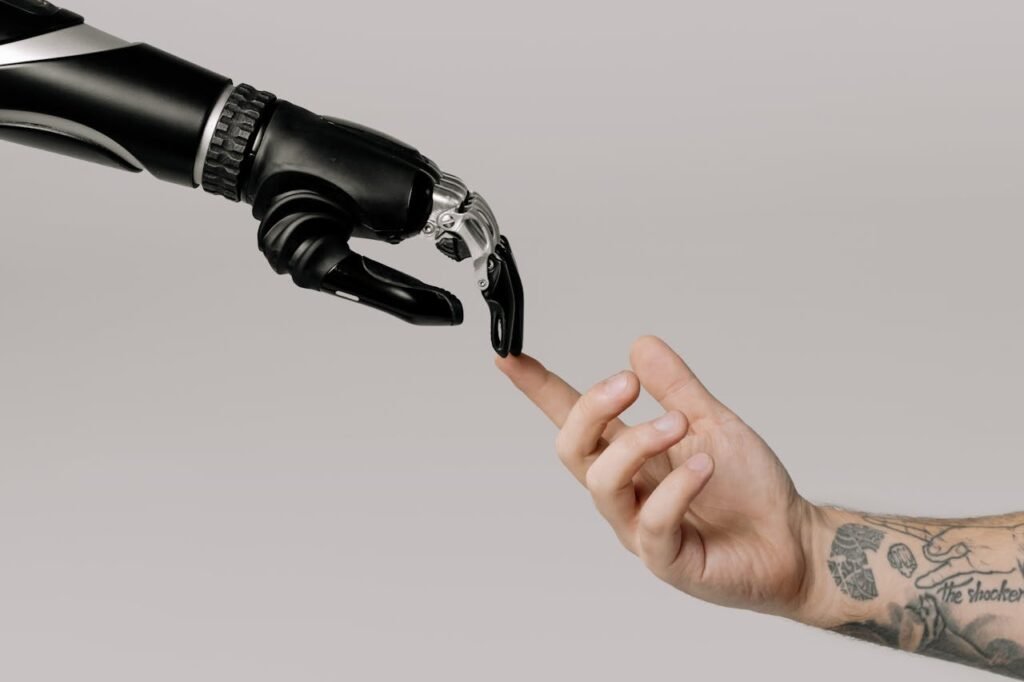Bionic limbs have captured the imagination of many, often being hailed as the future of prosthetic technology. With their ability to mimic natural movement, respond to user intent, and integrate advanced features like sensory feedback, these devices represent a significant leap forward in the prosthetics industry. However, their high cost and complex functionality often raise the question: Are bionic limbs truly worth the investment?
For individuals navigating the journey of limb loss, this question is deeply personal. Choosing a prosthetic is not just about restoring mobility; it’s about finding a solution that aligns with one’s lifestyle, aspirations, and comfort. At Robobionics, we’re dedicated to helping individuals make informed decisions by demystifying the complexities of advanced prosthetic technology. In this article, we’ll explore the potential of bionic limbs, weighing their benefits and challenges to help you decide if they’re the right fit for you.
Understanding Bionic Limbs: What Sets Them Apart
Bionic limbs stand at the intersection of engineering, biology, and artificial intelligence. Unlike traditional prosthetics, which rely on mechanical systems, bionic limbs are equipped with advanced technologies that replicate the functionality of natural limbs more closely.
From the integration of myoelectric sensors to AI-driven motion adjustments, these devices are designed to adapt to the user’s movements and environment in real time.
The Core Features of Bionic Limbs
At the heart of bionic limbs are technologies that enable seamless interaction between the device and the user. Myoelectric sensors detect electrical signals generated by muscles in the residual limb, allowing users to control their prosthetic through subtle movements.
These sensors are often paired with microprocessors, which process the input data and execute precise movements in the prosthetic.
Many bionic limbs also incorporate sensory feedback, a feature that mimics the sense of touch. By using pressure sensors and haptic feedback systems, these devices can relay information about grip strength or contact with objects, helping users perform tasks with greater confidence and accuracy.
Robobionics has embraced these advancements by developing prosthetics that prioritize intuitive control and user comfort, ensuring that technology enhances functionality without overwhelming the user.
Bridging Biology and Technology
The defining characteristic of bionic limbs is their ability to integrate with the user’s body, creating a seamless interaction between biology and technology. Unlike traditional prosthetics, which rely on mechanical joints and basic motion, bionic limbs use sophisticated systems to interpret and respond to the user’s intent.
At the heart of this innovation are myoelectric sensors, which detect electrical signals generated by the muscles in the residual limb. These signals are processed by embedded microprocessors, enabling the prosthetic to execute precise movements that mirror the user’s natural motion.
This level of integration gives users greater control and a more intuitive experience, making bionic limbs feel like an extension of their body.
Real-Time Adaptability: A Game Changer
Another standout feature of bionic limbs is their ability to adapt to real-time changes in the user’s environment. Whether navigating uneven terrain, adjusting to varying walking speeds, or gripping objects of different shapes and textures, bionic limbs excel at dynamic functionality.
This adaptability is powered by advanced microprocessors that analyze data from sensors and adjust the prosthetic’s behavior accordingly.
For example, a bionic foot may automatically increase its stiffness when walking uphill or provide additional flexibility when descending stairs. This ensures that users experience a smoother, more stable gait in any situation.
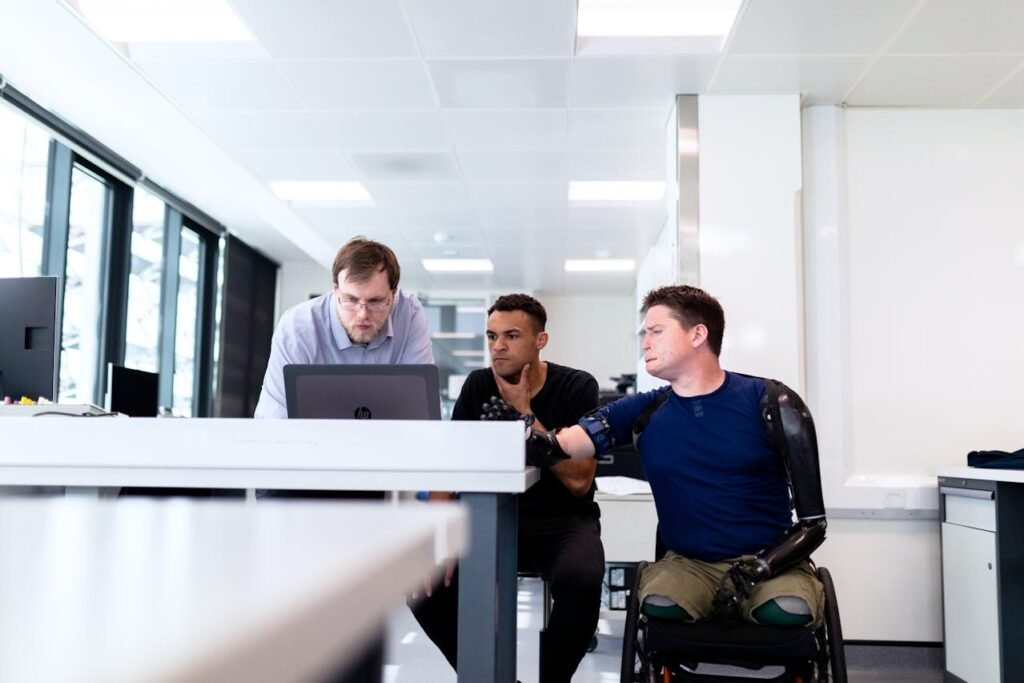
The Role of Sensory Feedback
One of the most revolutionary aspects of bionic limbs is their ability to simulate the sense of touch through sensory feedback. This feature allows users to gauge the pressure or force they’re applying, making tasks like holding a delicate object or shaking hands more intuitive.
Sensory feedback systems typically involve pressure sensors embedded in the prosthetic hand or foot. These sensors relay information to the user via haptic feedback, vibrations, or even direct neural stimulation. The result is a more natural interaction with the environment, enhancing the user’s confidence and precision.
Enhancing User Experience Through Smart Connectivity
Bionic limbs are not just mechanical devices; they are smart systems designed to evolve with the user. Many bionic prosthetics are equipped with Bluetooth or Wi-Fi connectivity, enabling seamless integration with smartphones and wearable technology.
Users can adjust settings, monitor performance, and receive updates through dedicated apps, adding an extra layer of convenience and personalization.
For businesses, investing in connected prosthetics can enhance the overall user experience. Providing user-friendly interfaces and interactive features, such as activity tracking or virtual coaching, can boost customer satisfaction and engagement.
These features also offer valuable data for continuous improvement, helping businesses refine their designs based on real-world usage patterns.
The Benefits of Bionic Limbs
For many users, the appeal of bionic limbs lies in their ability to restore not just mobility but a sense of normalcy and independence. These devices excel in delivering a high level of precision and adaptability, enabling users to perform complex tasks and engage in activities they may have thought were out of reach.
Enhanced Mobility and Functionality
Bionic limbs are designed to support a wide range of movements, from walking and running to grasping delicate objects. Advanced models can adapt to various terrains, detect uneven surfaces, and adjust stride length or joint stiffness automatically.
This adaptability is particularly beneficial for active users or those in dynamic environments, such as workplaces or outdoor settings.
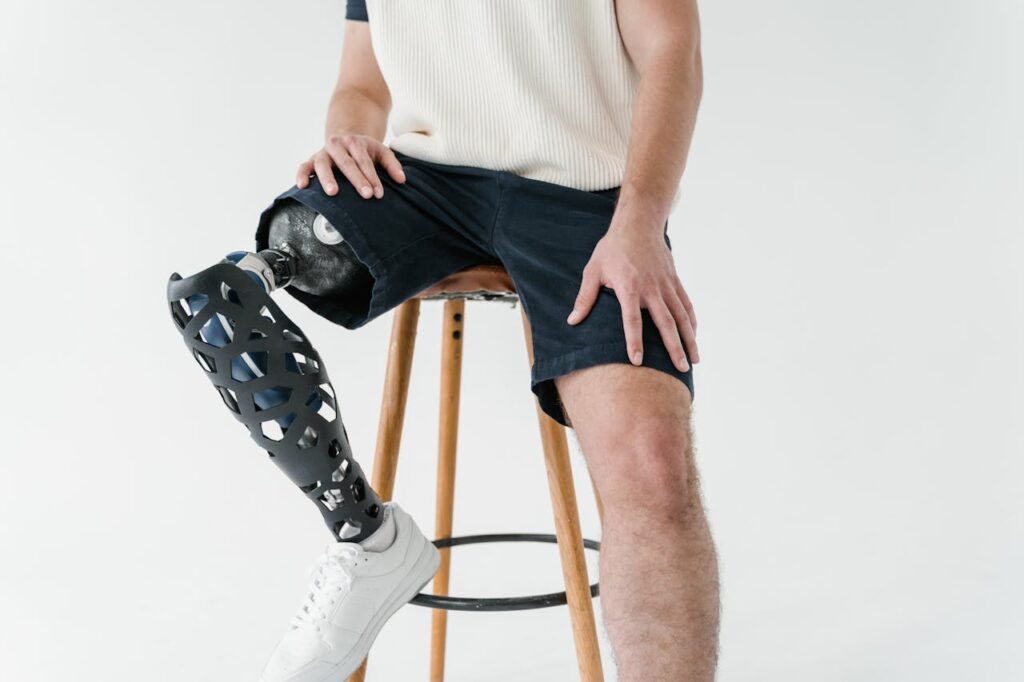
Improved Quality of Life
Sensory feedback and natural movement capabilities make everyday tasks, such as holding a cup or typing on a keyboard, more intuitive and less frustrating. For many users, this level of functionality translates into greater confidence and a better overall quality of life.
Robobionics’ bionic limb designs focus on enhancing the user experience by combining precision engineering with thoughtful design, ensuring that every device supports not only mobility but also emotional well-being.
Challenges and Considerations
While bionic limbs offer impressive capabilities, they are not without challenges. For potential users, understanding these limitations is essential in making an informed decision. For businesses, addressing these challenges through innovation and support can help bridge the gap between aspiration and accessibility.
The Cost of Advanced Technology
One of the most significant barriers to adopting bionic limbs is their cost. The inclusion of cutting-edge technologies like myoelectric sensors, microprocessors, and haptic feedback systems makes these devices considerably more expensive than traditional prosthetics.
For many individuals, this price point is prohibitive, particularly if insurance coverage is limited or unavailable.
To mitigate this, businesses can explore strategies such as modular designs, which allow users to add features over time, or partnerships with non-profits and insurers to subsidize costs.
Offering transparent pricing and flexible payment plans can also make these devices more accessible to a wider audience.
Learning Curve and Adaptation
Bionic limbs often require users to learn new skills and adapt to the device’s controls. For first-time users, mastering features like myoelectric control or terrain-responsive adjustments can feel overwhelming.
Rehabilitation programs tailored to bionic prosthetics are essential to ensure users gain confidence and maximize the benefits of their device.
Businesses can play a pivotal role in this process by providing educational resources, interactive tutorials, and access to trained specialists. By investing in user-friendly interfaces and intuitive design, manufacturers can reduce the learning curve and enhance the overall experience.
Durability and Maintenance
The advanced components of bionic limbs, such as sensors and microprocessors, require regular maintenance to ensure optimal performance. Exposure to moisture, dust, or extreme temperatures can impact the device’s longevity, making durability a key concern for active users.
To address this, businesses can prioritize the use of rugged materials and weather-resistant designs in their prosthetics. Offering maintenance packages and readily available replacement parts can further ease user concerns and foster long-term trust.

Who Benefits Most from Bionic Limbs?
Bionic limbs are not a one-size-fits-all solution. Their advanced features and capabilities make them particularly beneficial for specific user groups, such as active individuals, professionals requiring precise control, and those seeking a more natural integration of prosthetics into their daily lives.
Active Lifestyles
For athletes or individuals who engage in regular physical activity, bionic limbs offer unparalleled adaptability. Features like energy-return feet and terrain-responsive knees enable users to run, climb, and perform dynamic movements with ease.
Precision Demands
For users in professions requiring fine motor skills, such as artists or surgeons, the precision of bionic limbs can be transformative. Sensory feedback and intuitive control allow for delicate and controlled movements that traditional prosthetics may struggle to achieve.
At Robobionics, our bionic limb solutions are designed with diverse user needs in mind, offering customizable features that cater to individual lifestyles and goals.
The Role of Innovation in Making Bionic Limbs More Accessible
The high cost and complexity of bionic limbs have traditionally limited their adoption, but ongoing innovation is paving the way for broader accessibility. From advanced manufacturing techniques to smarter integration of artificial intelligence, the prosthetics industry is working to bring the benefits of bionic technology to a wider audience.
Leveraging 3D Printing for Customization
One of the most promising advancements in prosthetic manufacturing is the use of 3D printing. This technology allows for the rapid production of custom-fit prosthetics, significantly reducing costs while maintaining precision.
For bionic limbs, 3D printing can be used to create lightweight and ergonomic components tailored to the user’s anatomy.
At Robobionics, we have embraced 3D printing as a key strategy to deliver personalized solutions without compromising affordability. This approach not only improves the user experience but also ensures that bionic technology becomes more accessible to underserved populations.
AI-Driven Adaptability
Artificial intelligence has revolutionized bionic limbs, enabling devices to learn and adapt to the user’s movements and preferences.
By analyzing patterns and feedback, AI-powered prosthetics can anticipate the user’s intentions, making adjustments in real-time for smoother and more intuitive control.
For businesses, investing in AI integration opens the door to creating prosthetics that offer a truly personalized experience.
Partnering with AI developers and incorporating machine learning algorithms can enhance the functionality of bionic limbs, providing users with a device that evolves alongside their needs.

Modular Design for Cost-Effective Upgrades
The modular approach to prosthetic design is another game-changer in the quest for accessibility. By allowing users to upgrade individual components—such as adding sensory feedback or advanced joint control—modular bionic limbs reduce the financial burden of investing in an entirely new device.
This approach benefits both users and manufacturers by extending the lifespan of a prosthetic while ensuring it remains relevant as technology advances.
Businesses that adopt modular designs demonstrate a commitment to sustainability and user empowerment, creating solutions that grow with their customers.
Evaluating the Investment: Are Bionic Limbs Worth It?
For users, the question of whether bionic limbs are worth the investment depends on their unique needs, goals, and circumstances. While the cost and learning curve may seem daunting, the benefits of enhanced functionality, improved quality of life, and long-term adaptability often outweigh these challenges.
For businesses, helping users evaluate the value of bionic limbs requires transparent communication about their capabilities and limitations. Offering free consultations, detailed product demonstrations, and trial periods can help users make informed decisions with confidence.
Balancing Immediate Costs with Long-Term Benefits
One of the biggest concerns for users is the upfront cost of bionic limbs. Advanced technology, such as microprocessor-controlled joints and sensory feedback systems, drives up the price, making these devices less accessible for some.
However, the long-term benefits of these features often justify the expense. A bionic limb designed to mimic natural movement reduces strain on the body, minimizes secondary health issues, and offers greater durability compared to traditional prosthetics.
Businesses can help users see this broader perspective by emphasizing the cost-effectiveness of bionic limbs over time. For example, improved mobility and reduced wear and tear on the body can lead to fewer medical complications and lower healthcare costs in the future.
Highlighting these aspects in consultations or marketing materials can shift the conversation from upfront cost to long-term value.
Addressing Accessibility Through Financial Solutions
The investment in a bionic limb can be daunting, but businesses have the opportunity to bridge the gap with accessible financing options.
Flexible payment plans, partnerships with insurance providers, and collaboration with government or non-profit programs can make bionic technology attainable for a larger audience.
For example, offering modular payment systems allows users to add advanced features over time rather than purchasing a fully equipped bionic limb upfront. This approach not only makes the devices more accessible but also ensures that users only pay for the features they truly need.
Businesses that adopt these strategies can position themselves as allies in empowering users to access cutting-edge technology without financial strain.
Highlighting Functionality in Real-Life Scenarios
To truly assess whether bionic limbs are worth the investment, users need to understand how these devices will enhance their daily lives.
Demonstrating real-world applications, such as improved mobility at work, increased confidence in social settings, or greater independence at home, can provide a tangible understanding of the prosthetic’s value.
Businesses can facilitate this by offering trial periods or interactive demonstrations where users experience the capabilities of bionic limbs firsthand.
Seeing how features like adaptive movement, sensory feedback, or dynamic alignment work in real-life scenarios can significantly influence a user’s decision.
Tailoring these demonstrations to individual needs, such as highlighting specific features for athletes or office workers, adds further relevance and impact.
Empowering Users Through Knowledge
Educating users about the advanced capabilities of bionic limbs is essential in helping them evaluate their worth.
Many potential users may not fully grasp the differences between traditional prosthetics and bionic limbs or may underestimate the transformative impact of features like intuitive control or terrain adaptability.
Businesses should invest in creating accessible educational resources, including workshops, webinars, and explainer videos.
These materials should not only explain how bionic limbs work but also address common concerns, such as durability, maintenance, and adaptation time. Empowering users with knowledge ensures they make informed decisions and builds trust in the brand.
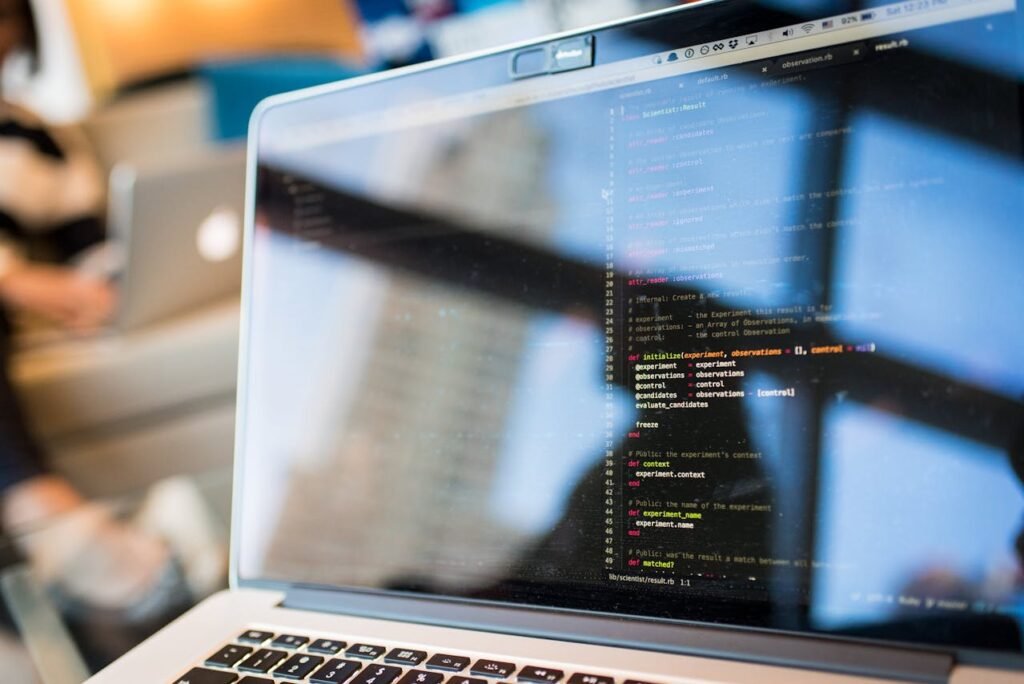
Personalization as a Key Value Driver
The ability to customize a bionic limb to suit individual needs is one of its most compelling benefits. Unlike traditional prosthetics, which often offer a one-size-fits-all approach, bionic limbs can be tailored to match a user’s anatomy, lifestyle, and aspirations.
This level of personalization enhances functionality and ensures the prosthetic feels like an extension of the body.
For businesses, emphasizing the role of personalization in user satisfaction is a strategic way to demonstrate the value of bionic limbs. Providing options for aesthetic customization, adjustable features, and software upgrades ensures that the device evolves with the user’s changing needs.
Marketing these advantages can help potential users see the investment as a pathway to long-term adaptability and satisfaction.
Bridging the Gap: Empowering Users with Holistic Support
Beyond the technology itself, the adoption of bionic limbs hinges on the support ecosystem surrounding the user. From pre-purchase education to post-purchase maintenance, a comprehensive approach ensures that users can fully realize the benefits of advanced prosthetic technology.
The Importance of User Education
For many individuals, the world of bionic limbs can feel intimidating due to the complex technology and high costs involved. Educating users about the functionality, customization options, and real-world applications of bionic prosthetics is critical to building confidence and clarity.
Businesses can offer workshops, webinars, and online resources to guide users through the decision-making process. Providing access to interactive demonstrations or trial periods helps users experience the capabilities of bionic limbs firsthand, making the decision more tangible and less abstract.
At Robobionics, we place education at the forefront of our services, ensuring that every user feels informed and empowered to choose the solution that aligns with their lifestyle and aspirations.
Tailored Rehabilitation Programs
The journey doesn’t end with the purchase of a bionic limb. Adapting to an advanced prosthetic requires a period of adjustment, during which users learn to master the controls, understand the feedback mechanisms, and integrate the device into their daily lives.
Tailored rehabilitation programs that address both physical and psychological needs are essential for this transition. These programs can include one-on-one training sessions, virtual tutorials, or gamified exercises that make learning engaging and accessible.
Robobionics collaborates with rehabilitation centers and therapists to ensure that users have the support they need to thrive with their bionic limbs. By focusing on the individual’s long-term success, we aim to build trust and satisfaction.
Building a Community of Support
The emotional and social aspects of using a prosthetic cannot be overlooked. Connecting users with peer communities—both online and offline—provides a valuable platform for sharing experiences, learning from others, and finding inspiration.
Businesses can facilitate these connections by hosting user forums, creating social media groups, or organizing community events. Such initiatives not only enhance the user experience but also provide valuable feedback for continuous product improvement.
At Robobionics, we believe that empowerment comes from belonging. Our efforts to build a supportive user community ensure that no individual feels isolated on their journey with a prosthetic.
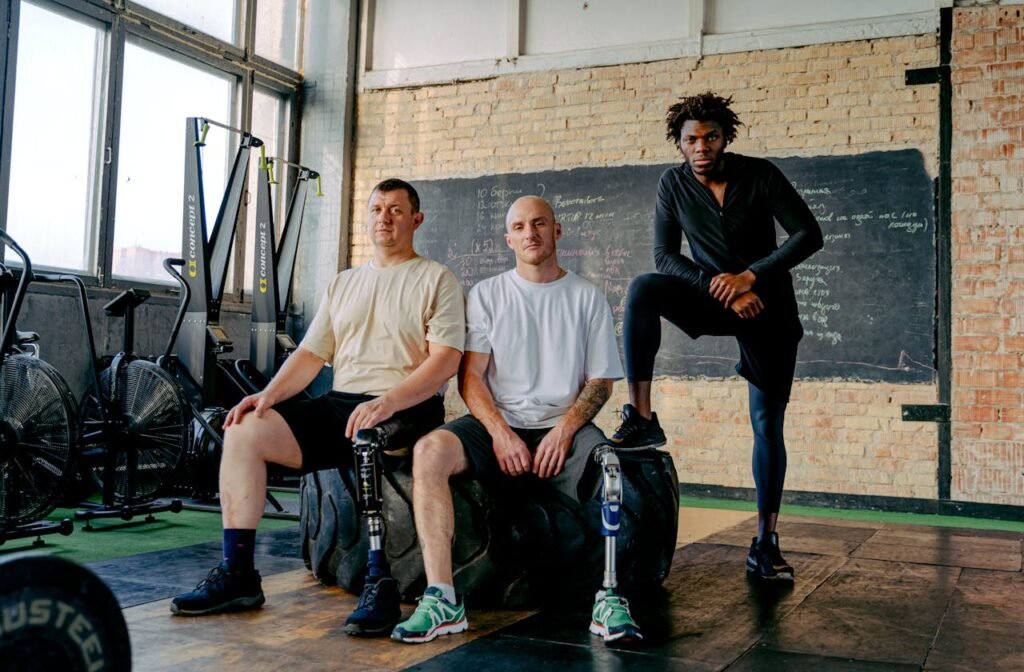
Conclusion
Bionic limbs represent a remarkable convergence of science, technology, and human ingenuity. For many users, they offer life-changing benefits, from enhanced mobility and precision to a renewed sense of independence. However, their complexity and cost demand thoughtful consideration and support from both users and businesses.
For businesses, the challenge lies in making bionic limbs more accessible, adaptable, and user-friendly without compromising on innovation. By focusing on education, modular designs, and a robust support ecosystem, manufacturers can bridge the gap between advanced technology and real-world needs.
At Robobionics, our mission is to make advanced prosthetics not just a possibility but a reality for all. By combining cutting-edge technology with compassionate care, we aim to empower individuals to embrace new opportunities and redefine their limits.



